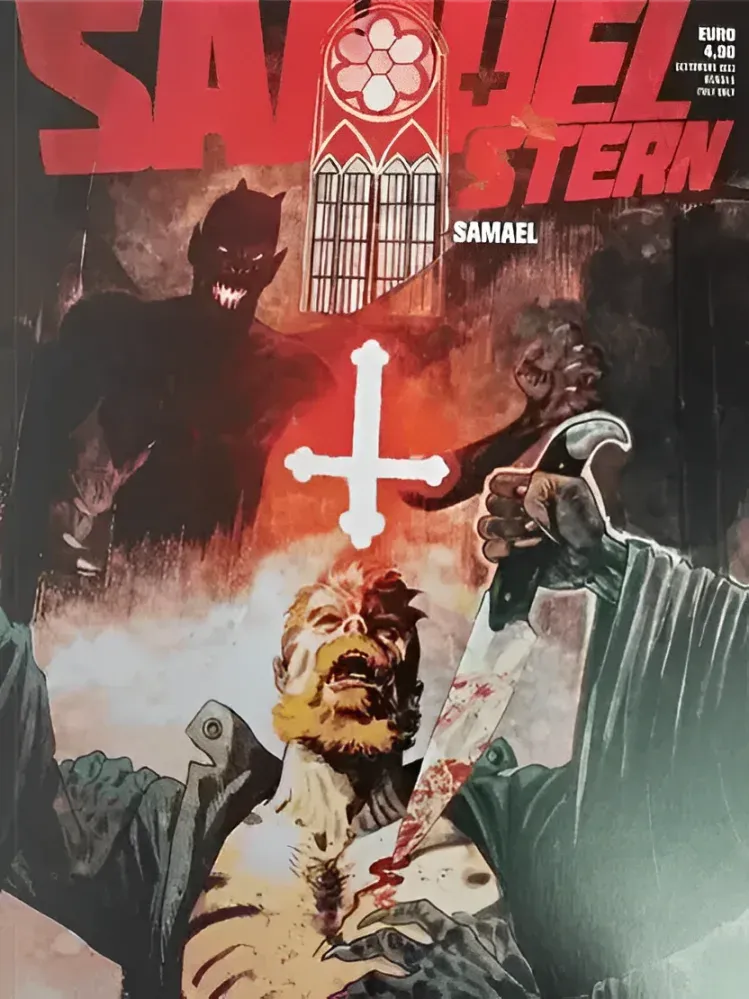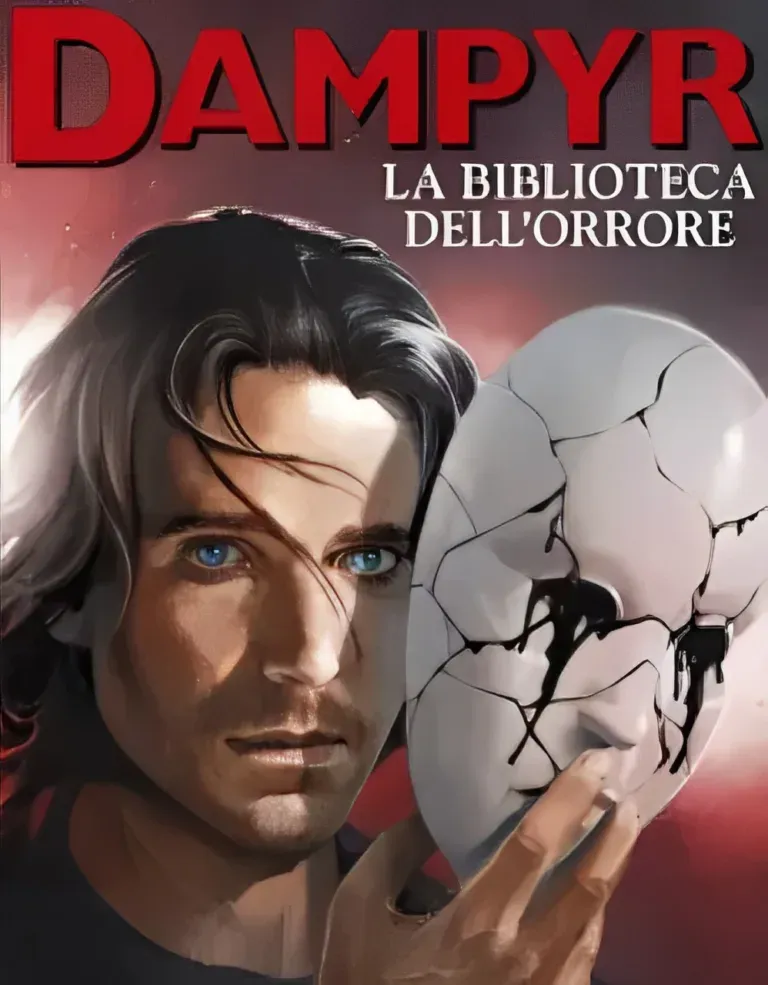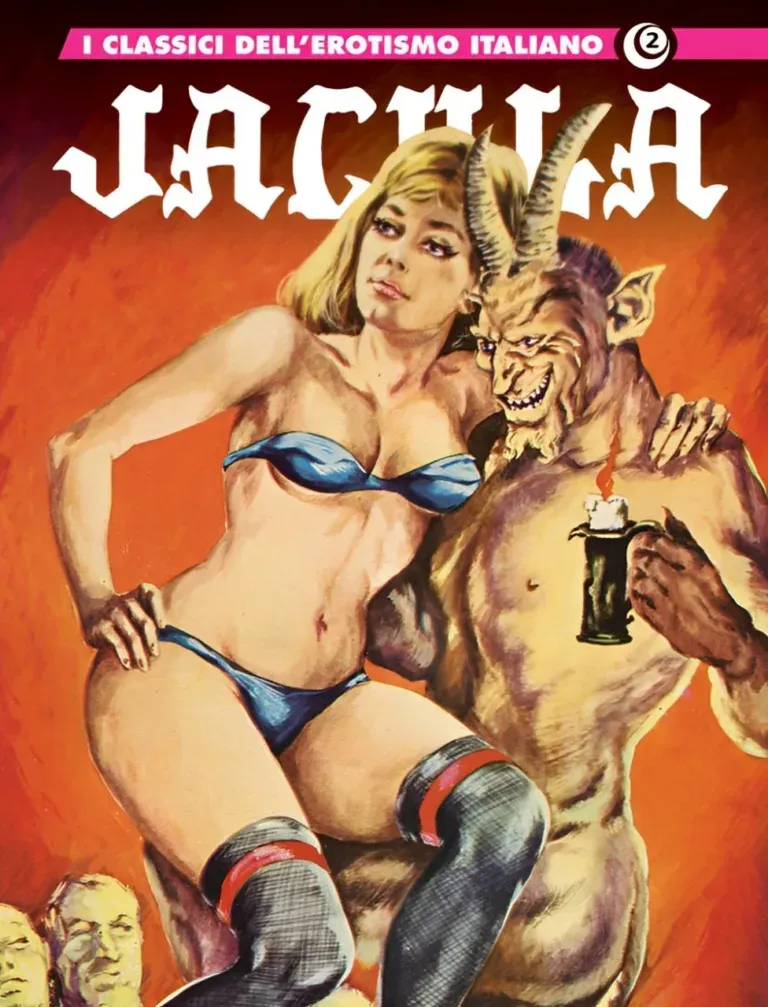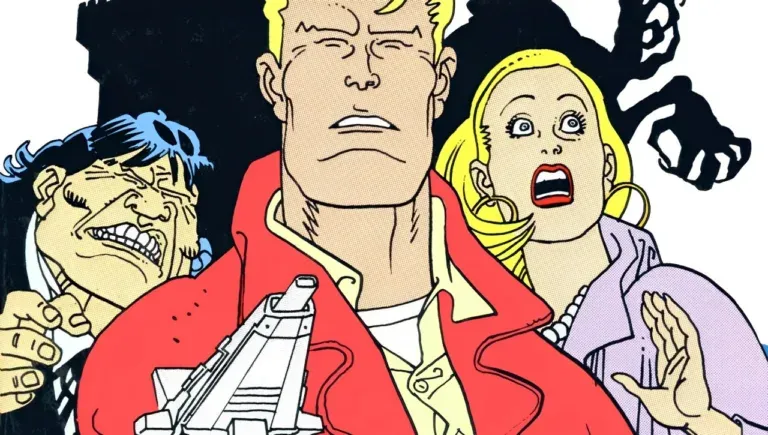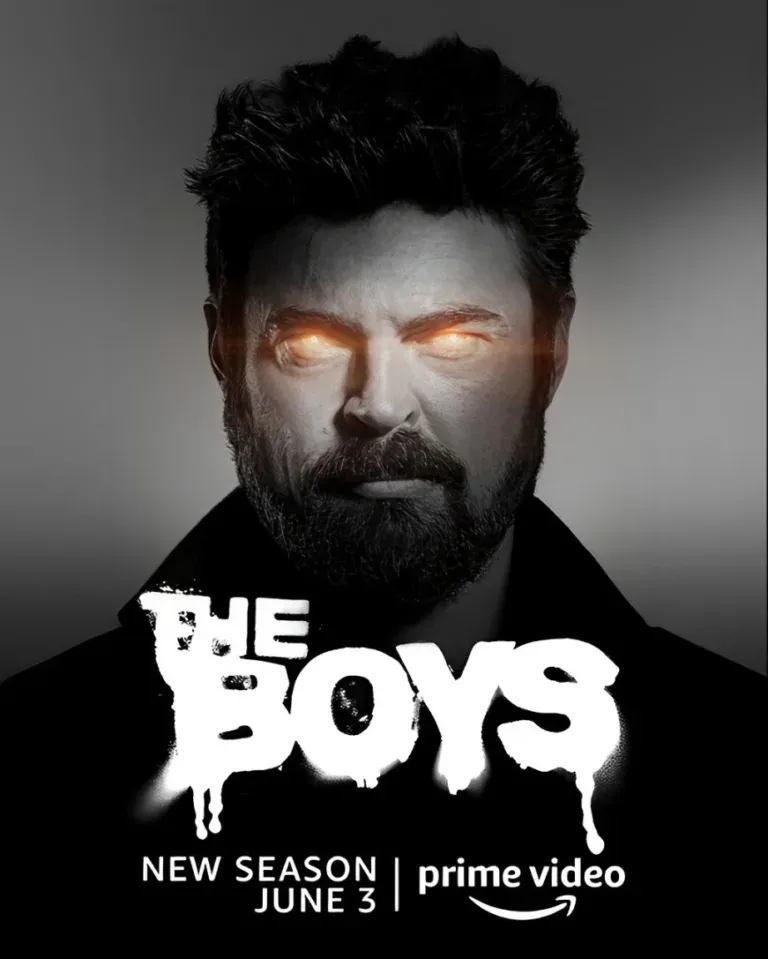Marshal Law
 Marshal Law is a comic book that represented a true milestone in the landscape of superhero stories. Created by Pat Mills and Kevin O’Neill, the series debuted in the early 1980s as a dark and violent parody of the genre. Not only did it radically depart from traditional heroic narratives, but it also inspired modern works such as The Boys, with which it shares many themes and the same cynical and disillusioned view of superheroes. Garth Ennis’ work, in fact, drew inspiration from Marshal Law to explore the idea of superheroes as corrupt and morally ambiguous characters, anticipating many of its themes, such as the abuse of power and criticism of consumerist society.
Marshal Law is a comic book that represented a true milestone in the landscape of superhero stories. Created by Pat Mills and Kevin O’Neill, the series debuted in the early 1980s as a dark and violent parody of the genre. Not only did it radically depart from traditional heroic narratives, but it also inspired modern works such as The Boys, with which it shares many themes and the same cynical and disillusioned view of superheroes. Garth Ennis’ work, in fact, drew inspiration from Marshal Law to explore the idea of superheroes as corrupt and morally ambiguous characters, anticipating many of its themes, such as the abuse of power and criticism of consumerist society.
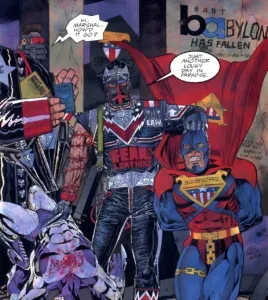 In the world of Marshal Law, superheroes are not the champions of justice we see in traditional comics but have become corrupt, selfish, and violent beings. The introduction of the protagonist, Marshal Law, a brutally ruthless vigilante, brings the narrative to question the true costs of power and the illusion of “good” that superheroes often embody. Mills and O’Neill’s vision is never rosy; on the contrary, it is explicitly critical of everything superheroes represent in popular culture, targeting their hypocrisy, problematic sexuality, and gratuitous violence.
In the world of Marshal Law, superheroes are not the champions of justice we see in traditional comics but have become corrupt, selfish, and violent beings. The introduction of the protagonist, Marshal Law, a brutally ruthless vigilante, brings the narrative to question the true costs of power and the illusion of “good” that superheroes often embody. Mills and O’Neill’s vision is never rosy; on the contrary, it is explicitly critical of everything superheroes represent in popular culture, targeting their hypocrisy, problematic sexuality, and gratuitous violence.
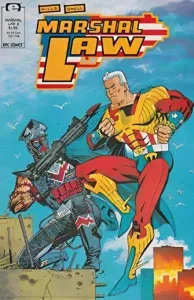 Similar to The Boys, the series has a dark and grotesque component that makes its heroes (if we can call them that) not only tragic but also repulsive. Marshal Law is, in fact, an anti-hero who acts as a hunter of superheroes, but with the awareness that his fight is an endless war against a society that is now completely corrupt. His violent approach to justice makes him all the more human the more ruthless he becomes—a character destined to continuously clash with his own demons.
Similar to The Boys, the series has a dark and grotesque component that makes its heroes (if we can call them that) not only tragic but also repulsive. Marshal Law is, in fact, an anti-hero who acts as a hunter of superheroes, but with the awareness that his fight is an endless war against a society that is now completely corrupt. His violent approach to justice makes him all the more human the more ruthless he becomes—a character destined to continuously clash with his own demons.
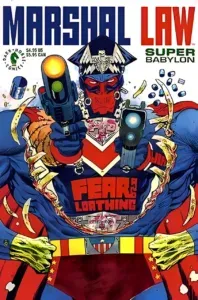 The comic also stands out for its provocative tone and fierce satire of American culture, consumerism, and political corruption. The superheroes in Marshal Law are not just corrupted by their powers; they are also symbols of a consumerist and capitalist society, where an individual’s value is measured by their ability to generate money. This social aspect of Marshal Law is one of the main similarities with The Boys, where corporations like Vought control superheroes and use them as commodities to maximize profits, while the public is led to worship them as gods.
The comic also stands out for its provocative tone and fierce satire of American culture, consumerism, and political corruption. The superheroes in Marshal Law are not just corrupted by their powers; they are also symbols of a consumerist and capitalist society, where an individual’s value is measured by their ability to generate money. This social aspect of Marshal Law is one of the main similarities with The Boys, where corporations like Vought control superheroes and use them as commodities to maximize profits, while the public is led to worship them as gods.
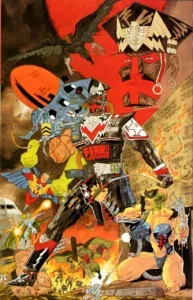 Another common point between Marshal Law and The Boys is the view of superheroes as symbols of power and violence. While in The Boys the Vought corporation uses its superheroes to dominate the world, in Marshal Law, the heroes’ power is fueled by violence and sex. The series also tackles very mature and controversial themes, such as the abuse of power, sexuality, and disillusionment, with a narrative that often veers into the grotesque to illustrate the hypocrisy of a society that idolizes superheroes without seeing their true nature.
Another common point between Marshal Law and The Boys is the view of superheroes as symbols of power and violence. While in The Boys the Vought corporation uses its superheroes to dominate the world, in Marshal Law, the heroes’ power is fueled by violence and sex. The series also tackles very mature and controversial themes, such as the abuse of power, sexuality, and disillusionment, with a narrative that often veers into the grotesque to illustrate the hypocrisy of a society that idolizes superheroes without seeing their true nature.
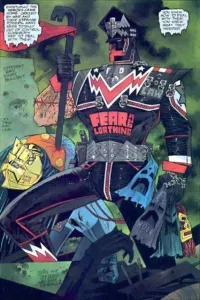 The characterization of the protagonist, Marshal Law, is another element that ties him to figures like Billy Butcher from The Boys. Both are driven by a deep hatred for superheroes, but this rage inevitably leads them to become similar to the enemies they seek to destroy. Marshal Law, like Butcher, is a character who struggles with his morality and the weight of his actions—a hero who edges closer to what he despises.
The characterization of the protagonist, Marshal Law, is another element that ties him to figures like Billy Butcher from The Boys. Both are driven by a deep hatred for superheroes, but this rage inevitably leads them to become similar to the enemies they seek to destroy. Marshal Law, like Butcher, is a character who struggles with his morality and the weight of his actions—a hero who edges closer to what he despises.
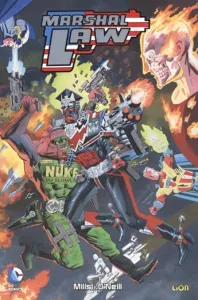 Kevin O’Neill’s graphic style is equally crucial to the comic’s visual impact. His style is raw and twisted, perfect for representing the violence and distortion of the world in which Marshal Law operates. Every fight scene is extremely dynamic and visceral, with a stylization that makes the violent situations even more grotesque. O’Neill manages to convey the absolute brutality of Marshal Law’s world, sparing no disturbing details that amplify the disillusionment and madness of the plot.
Kevin O’Neill’s graphic style is equally crucial to the comic’s visual impact. His style is raw and twisted, perfect for representing the violence and distortion of the world in which Marshal Law operates. Every fight scene is extremely dynamic and visceral, with a stylization that makes the violent situations even more grotesque. O’Neill manages to convey the absolute brutality of Marshal Law’s world, sparing no disturbing details that amplify the disillusionment and madness of the plot.
 Throughout the series, Marshal Law does not fail to provoke the reader with shocking images and situations bordering on the paradoxical. Political satire, sexual allusions, and criticism of power structures are the main ingredients of a story that seeks neither approval nor understanding but simply critical reflection on reality. In this way, the series turns out to be much more than just a superhero comic, but an allegory of a society that no longer knows where it is going.
Throughout the series, Marshal Law does not fail to provoke the reader with shocking images and situations bordering on the paradoxical. Political satire, sexual allusions, and criticism of power structures are the main ingredients of a story that seeks neither approval nor understanding but simply critical reflection on reality. In this way, the series turns out to be much more than just a superhero comic, but an allegory of a society that no longer knows where it is going.
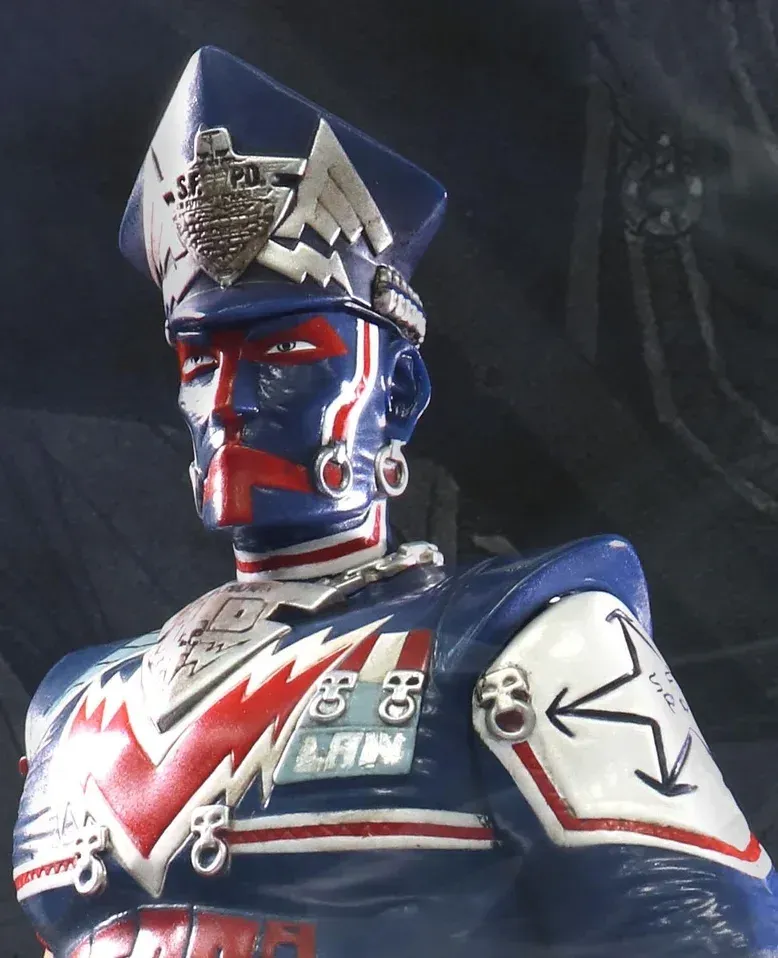 As the story progresses, Marshal Law becomes increasingly disillusioned. Violence never leads to a real solution, and the protagonist’s victories always seem temporary and unsatisfying. The end of the comic leaves the reader with a sense of emptiness, as if the fight against corruption and hypocrisy serves no purpose other than self-destruction. It is a grim yet highly realistic vision of a world where change is impossible, and every attempt at resistance seems only to exacerbate the problem.
As the story progresses, Marshal Law becomes increasingly disillusioned. Violence never leads to a real solution, and the protagonist’s victories always seem temporary and unsatisfying. The end of the comic leaves the reader with a sense of emptiness, as if the fight against corruption and hypocrisy serves no purpose other than self-destruction. It is a grim yet highly realistic vision of a world where change is impossible, and every attempt at resistance seems only to exacerbate the problem.
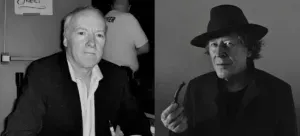
Spoiler Warning: Marshal Law Finale
In the series finale, Marshal Law faces a decisive battle against the supreme superhero, an entity representing the pinnacle of corruption and violence. His fight, unfortunately, ends in tragedy: while Marshal Law destroys his enemy, he fails to save himself. His death is symbolic—a sacrifice that does not lead to resolution but rather to reflection on the system’s failure. The comic ends on a bitter note, where the protagonist finds no redemption but only an ending that seems inevitable, mirroring the condition of the society he tried to fight. This hopeless finale questions the entire concept of heroism and justice, leaving the reader with the feeling that perhaps the real enemy is not even the superheroes but the system that created them.
 Subscribe to our YouTube channel
Subscribe to our YouTube channel
Dive into the world of Horror Comics

